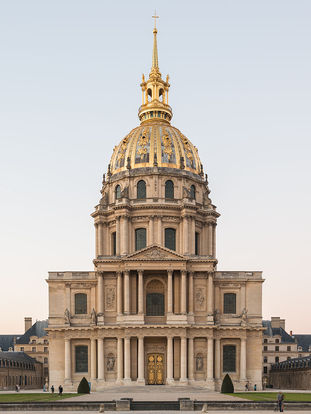In the 18th century, the Faubourg Saint-Germain emerged as the next prominent Parisian neighbourhood.
One of the main reasons nobles were drawn to this part of Paris was the construction of the Hôtel des Invalides, a beautiful military hospital and retirement home commissioned by Louis XIV.
The establishment of the Invalides spurred the development of the surrounding area, which was perceived as larger, quieter, and less polluted than the Marais.
It also offered easier access to Versailles.
Many of these grand townhouses still stand today and have been repurposed as ministries or museums.
They include the :
- Hotel Matignon (the Prime Minister's residence)
- Hotel Biron (the Rodin museum)
- Hotel de Salm (the HQ of the Legion of Honour)
- Hotel de Lassay (the President of the National Assembly's residence)
- Hotel de Brienne (the Ministry of Defence)
- Hotel du Châtelet (the Ministry of Labour)
- Hotel de Villeroy (the Ministry of Agriculture)
- Hotel de Roquelaure (the Ministry of Ecology)
- Hotel de Rochechouart (the Ministry of Education)
- Hotel de Boisgelin (the Italian embassy)
- Hotel de Galiffet (the Italian cultural institute)
- the beautiful Hotel de Bourbon-Condé (privately owned)
The Faubourg Saint-Germain has remained fashionable ever since.
It features prominently in Proust's renowned novel À la recherche du temps perdu.


































.jpg)